The sedentary lifestyle, bad posture, and even anatomical issues are some of the culprits for uneven hips or pelvic tilt. It can cause discomfort, nerve and back pain. The discomfort can be especially pronounced at night, and it can be hard to cope with how to sleep with uneven hips. Some muscles tense up while others get weak when we lay down to sleep. Finding a balanced position is not easy.
What Is A Lateral Pelvic Tilt (Uneven Hips)?
The pelvic tilt is the position of the pelvis in relation to the body. If the pelvis is out of place, it’s tilted one way or the other; it leads to many different disruptions in the kinetic chain(1). The lateral pelvic tilt is one of the types of pelvic tilt issues. With lateral pelvic tilt, the pelvis shifts so much that one hip is higher than the other. This leads to muscle imbalances throughout the whole body and puts the lumbar spine out of neutral position.
Topics Explored
- Why Are My Hips Uneven? »
- How To Tell If My Hips Are Uneven? »
- How to Sleep With Uneven Hips »
- Other Types of Hip Tilts »
- FAQs »
Why Are My Hips Uneven?
If you spent your whole life without pain and a perfectly balanced pelvis, you might wonder how and why are my hips uneven all of a sudden. Now, you are left to deal with pain and re-learning how to sleep with uneven hips. Your lifestyle, posture, and muscles can be to blame as well as other ailments like scoliosis.
How To Tell If My Hips Are Uneven?
If you feel any pain and think you might have uneven hips, you can check it yourself in a couple of ways. While the methods can be correct, always check with a physician if you’re concerned and experience discomfort.
Mirror Test:
Instructions:
If you suspect you may have uneven hips, this is the simplest self-diagnosis. For a prompt test, stand in front of a mirror. Place your hands at the highest point of your waistline. Hold them flat to the ground and examine the level of both.
Test Outcome:
Study the levels; if one of the sides is higher opposed to the other, you have uneven hips or Lateral pelvic tilt.
Trendelenburg Test:
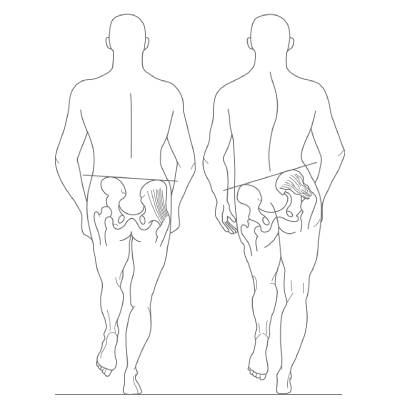
Instructions:
The Trendelenburg test(3) includes movement. First, face the mirror with your hands on the highest point of your waist and stand on one leg for 10 seconds. Then do a single-leg squat. Watch for any waist height change throughout the test.
Test Outcome:
If you noticed unevenness of the pelvis, this might imply that you have uneven hips and instability in the muscle on the side of the hip hike.
How to Sleep With Uneven Hips
To learn how to sleep with uneven hips, it’s important to determine the exact cause of the pelvic tilt. This way, you can make a difference and ease the discomfort. Here are some general tips.
Sleep on Your Back
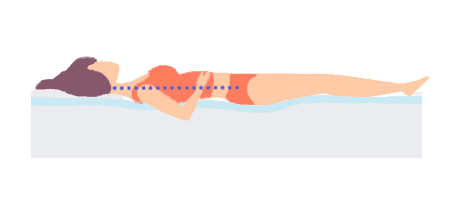
When you sleep on the side, the hip that is facing up will be hiked run the risk of tissue adaptation and the muscles stiffening up further.
Also, if you cross your top leg over the body, the torso and spine get misaligned. Sleeping on your back, especially with a pillow behind the knees to support the lower back, helps reduce pain in the front and back of the hip and pelvis.
Don’t Sleep With One Leg Up When On Your Back
The sleep position resembling the yoga tree pose won’t give you any benefit when it comes to uneven hips. Putting one leg higher than the other for the night may feel good now but will eventually cause more misalignment issues.
Lifting both legs takes the weight off your pelvis and relieves pain, but hiking one hip does the exact opposite and can cause lower back damage.

Avoid Sleeping on Your Stomach

Stomach sleeping is the most harmful sleeping position when dealing with hip pain, as it puts extreme pressure on your hips and back. In addition, it’s not the natural alignment of your spine, so it can easily lead to chronic hip pain among other issues.
Learning how to sleep with uneven hips takes time and patience. However, switching from stomach sleeping is worth it as it can help you neutralize the hip pain as well as other back pain.
Use a Knee Pillow
If you still favor side sleeping, use a pillow between your knees. The pillow will support the weight of your upper leg and help prevent the pelvis from twisting. It also helps to align your spine, promotes better hip placement, and lessens the pressure on the hips.
A contoured pillow with a strap is the best choice as it’s less likely to move.

Stretch Out the Quadratus Lumborum Before Bed
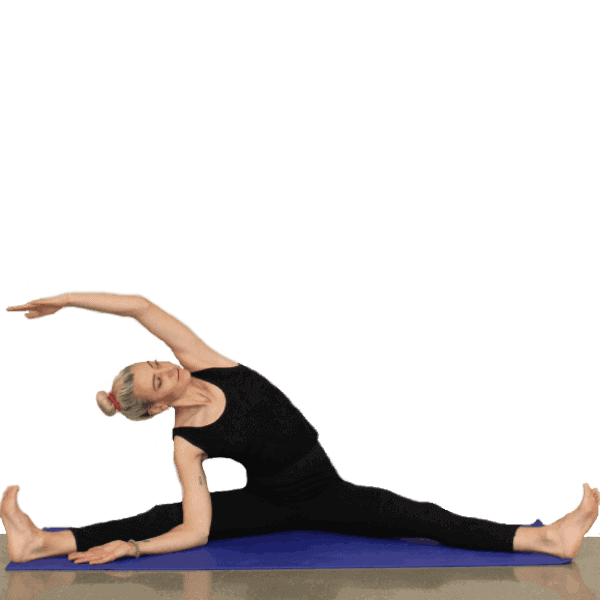
The quadratus lumborum is the muscle located in the torso attached to the pelvis and the ribcage. When you have uneven hips, the muscle is tighter and shorter on one side.
Two simple stretches you can do before bed is a modification of the child’s pose with side stretch or a seated deep side stretch (pictured). By stretching and strengthening the weaker side of the quadratus lumborum, it can become stronger and help even out the hips.
Other Types of Hip Tilts
Now that we know how to sleep with uneven hips, it’s time to address two other hip tilts that exist. These are additional conditions causing uneven hips that are very different from lateral pelvic tilt. Often when discussing uneven hips, they’re clumped together, but they’re a result of diverse causes and require different treatment.
Anterior Pelvic Tilt
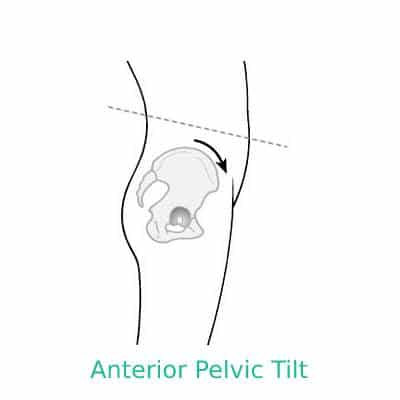
The anterior pelvic tilt is caused by the rotation on the front of the pelvis forward and the back of the pelvis upward(4). It impacts spine health and is often a result of a sedentary lifestyle, bad posture, or pregnancy.
When sitting for an extended time, the hip flexors tighten, which changes the pelvis position.
Anterior Pelvic Tilt
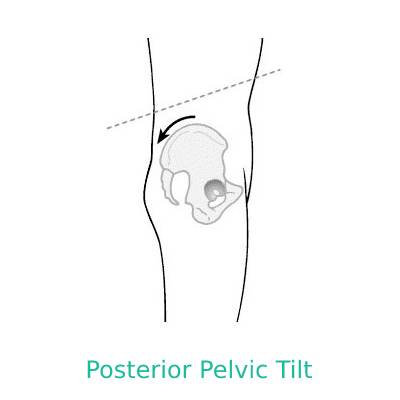
The posterior pelvic tilt is the contrast of the anterior pelvic tilt. The pelvis tilts up and back with the posterior pelvic tilt while the lower part of the pelvis rotates under the body(4).
Same as the previous condition, the spine is put out of alignment. The leading cause of posterior pelvic tilt is tight hamstrings.
Bottomline – How to Sleep with Uneven Hips
It’s important to understand the exact cause of your uneven hips before learning how to sleep with uneven hips and actively trying to correct them. Consult a physiotherapist or another medical professional to understand the root cause. Improving your sleep posture will make a big change, relieve some pain and help you sleep better. However, it has to be combined with significant lifestyle changes like moderate exercise and improved posture.
FAQs:
How do you fix lateral pelvic tilt while sleeping?
There are no sure fixes for lateral pelvic tilt while you sleep. Learning how to sleep with uneven hips is is a combination of lifestyle improvements. Switching your sleep position to sleeping on your back can lessen the burden on your hips. This position lowers the chance of hip hikes during sleep. If you find it uncomfortable for your lower back, place a pillow under the knees.
How should I keep my hips aligned if I’m a side sleeper?
Using a pillow between your knees is a great solution to keep your hips aligned when sleeping on the side. One with a strap will prevent your top leg from crossing over. Additionally, you can use a memory foam mattress or topper so that the side facing down is adequately cradling, and you won’t wake up with a sore hip.
Verified Sources:
- International Sport Sciences Association: https://www.issaonline.com/blog/index.cfm/2019/pelvic-tilt-what-is-it-and-how-do-you-correct-it
- Orthopedic Massage, Theory & Technique: https://www.sciencedirect.com/topics/nursing-and-health-professions/lateral-pelvic-tilt
- Physio Pedia: https://www.physio-pedia.com/Trendelenburg_Sign
- Precision Movement: https://www.precisionmovement.coach/how-to-fix-pelvic-tilt/